What action camera to buy for underwater shooting
Action cameras for diving separated from the main segment almost immediately after its appearance. Today it is an essential attribute of any diver. Many who are fond of scuba diving, as well as diving to the depth, try to fix their mistakes and successes. This helps them gadget, which will be discussed below.
Content
The difference between the underwater action camera from the usual
As you might guess, the cameras in question are used by fishermen for spearfishing, divers for free diving, shooting or fixing some tricks. The peculiarity is that all the action takes place under water.
Models for underwater shooting have a number of differences from the usual action camera. For example, a camera for use in extreme conditions may have a strong body, but not be designed for immersion in water. To do this, the gadget must have additional characteristics, because the environmental parameters are quite different. Each model, designed for immersion in water, has a much more protected body: it is not so much about the impact-resistant material, but about the water resistance that the device needs in the first place. If you immerse an action camera, not intended for use in such conditions, in water, it can fail.

As a rule, manufacturers put special warnings in the instructions on whether it is possible to use a particular model when diving, or not.
So, the action camera, designed to dive, has the following Extra options:
- the case is completely protected from moisture;
- reinforced insulation electrics;
- special parameters of optics, taking into account the distortion of the image in immersion;
- Some models can hold more pressure when diving, and this is an additional strengthening of the case;
- special mount, the ability to fix the gadget on a scuba or diving mask.
Most often, the usual action camera is devoid of all the above parameters, and this is true, because on the surface they are absolutely not relevant.
What are the action camera for underwater shooting
Having developed into a separate segment, underwater action cameras almost immediately divided into several different types. Some of them are designed for shallow diving, others for a long stay in the water, and others for high-quality video. In total there are several basic options, and most manufacturers, one way or another, adhere to specified standards, trying to conform to one or another form.
Camera in the form of a mask
Quite an interesting option. It allows you to optimally balance and seal the case, because all electrics are in one place. The device will always be in place, will not be lost, besides, the hands remain absolutely free. The disadvantage of such a device can be considered dimensions.Due to the built-in camera in the mask, it weighs a bit more. At first this slight weighting It may seem insignificant, but it constrains movement and reduces the speed of reaction. Some users complain of heaviness in the neck.

Action camera with aquabox
This is the most common option. Universal camera, for example, “GoPro”, is placed in a sealed box, completely repeating its contours. Such a camera can be attached to a mask, fixed on the shoulder, or held in hand. Convenient, but only on the one hand. Boxing itself makes the structure a bit heavier, and the absence of native fasteners can lead to difficulties. In addition, do not forget that ordinary action cameras are designed for use on the surface. It is unlikely that engineers thought about streamlined parameters, which largely affect the speed of movement under water and can lead to significant energy consumption. An aquabox, worn over the camera body, will not affect the performance better, and if the camera is supposed to be held in hand, the diver will have to make much more effort.
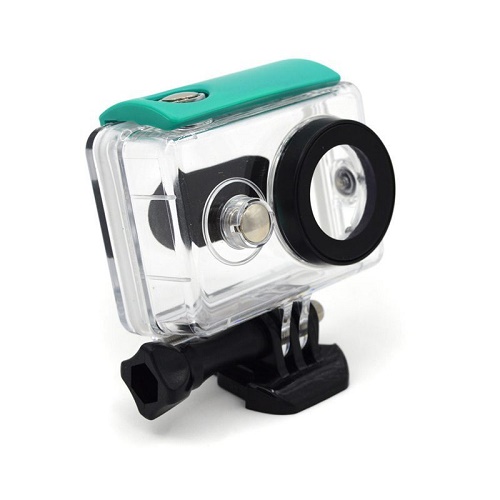
Tips for choosing a model
All cameras designed for use under water are waterproof. Differences may lie in the application. For example, diving, free diving, assume a great depth at which the device will have to work: such an apparatus must be able to work at high pressure. Shockproof and waterproof action cameras are meant For fishingwhere there is a risk of accidental damage to the equipment in case of unsuccessful cutting.
A conventional underwater camera is usually designed for non-aggressive shooting in shallow water. The classic camera is not able to withstand high pressure, so diving deeply with it is not recommended. Fish that have broken off the hook may damage the equipment. The area of use of such devices - underwater shooting at shallow depths.
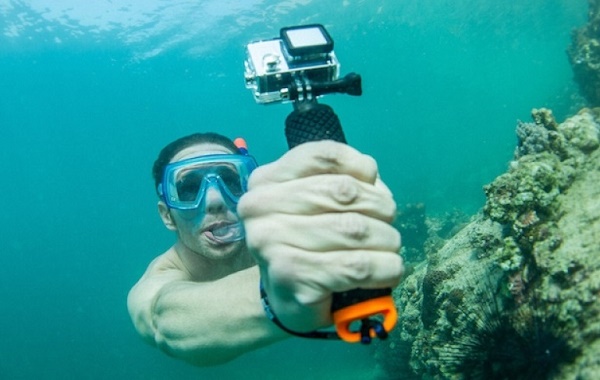
So which camera is better to buy? As in most highly specialized products, it is first necessary to make a start from needs.
- If you are planning a free dive to a considerable depth in excess of 5-7 meters, it is best to think about a more secure technique. At a depth of 15-20 meters, other criteria for technology are already being advanced.The greater the depth, the greater the degree of protection that a vehicle must have.
- For fishing and recording this process on the video best suited secure equipment. The body of such a camera must be rubberized and well insulated, and the material of manufacture is certified by IP standards
- If the user wants to just relax on the beach and shoot the bathing process with friends, you can restrict yourself to the most usual action camera in aquabox. The latter option will be somewhat cheaper, but you shouldn’t expect high rates of protection and streamlining from it either.
The camera used in the hands, allows you to shoot more due to maneuverability. Usually an extension tripod comes to help her.
Selection options
Underwater action camera, as well as ordinary action cameras, has a number of parameters. It is better to consider them before choosing any particular model you like.
- Screen resolution and color reproduction. The higher the resolution, the better the picture, almost everyone knows about it. In the case of an underwater action camera, everything is exactly the same. When diving to an ever greater depth, the colors will fade, become colder, so the more colors the matrix is able to recognize and fix, the better. On these two parameters you should not save, because they are decisive.
- Moisture protection. Small depths of up to seven meters put forward some requirements. Diving to a level of up to 20 meters requires additional protection. There is a technique capable of shooting at a depth of 100 meters, but it belongs to the category of professional. The higher the immersion parameter value, the more protected and insulated the hull should be. The main thing is to clearly understand that the device will indeed sink to the indicated depth in the instructions. If not, then you should not overpay for this parameter.
- Autonomy. Problems with autonomy occur in any wearable device. This is due to the small size of the batteries that can fit in the body of the gadget.What can we say about the miniature optics and the board of the underwater action camera, where the dimensions of the entire device are maximally minimalized to put it in a diving mask. The more autonomy, the longer the device will live on a single charge, which means that you do not have to float to the surface at the most inopportune moment to stomp in the flippers on the sand for charging.
- Body shape. If the user needs high maneuverability under water, then it is best to choose models with a streamlined shape, or give preference to the camera built into the mask for diving. Aquabox, of course, is a very functional solution, but it leaves much to be desired in terms of slip parameters in water. To use a rectangular chamber, even if it is dressed in a slightly rounded protective box, it will take a little more effort. For diving to a greater depth, from 10 m, the camera should be only streamlined, without even straight lines.
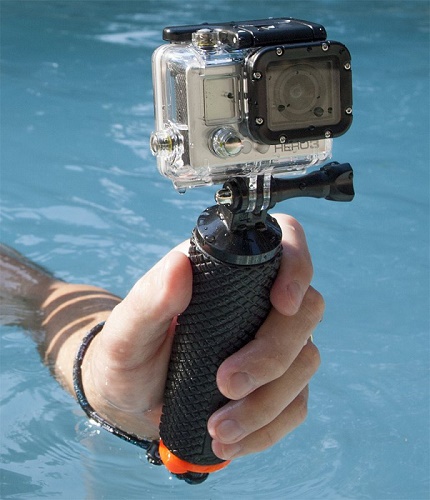
Fixing the camera and recommendations for its use
As a rule, most models have several types of fastening.
- The first is the usual "Clothespin" for biting a piece of clothing followed by fixation through a snug fit to the surface.
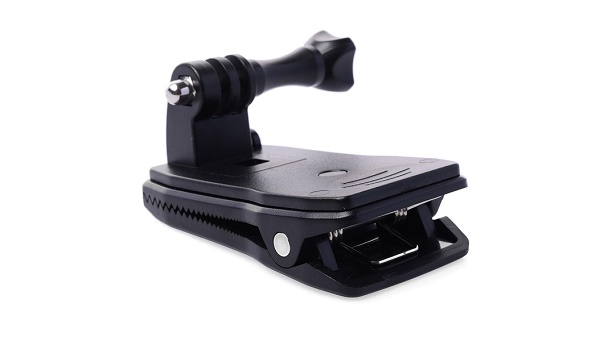
- Very popular headband using the lock. This lock can cling to the diving mask.

- The next type of attachment is special. handle for fixing on the auxiliary pole (tube). As a rule, such objects look like the most ordinary selfie sticks, it is on them that the underwater action camera is attached. The advantage of this type of attachment is its strength, because the device sits on the pin very tightly. The downside is the need to keep the whole structure in hand, i.e. freedom of movement is violated.

- Device on a suction cup Not the most popular among fans of underwater shooting. The reason for this is quite clear: there is simply nothing to fasten such a sucker.

- There are a number fasteners in the form of strong buckles, which are fixed on the wrist in the form of a bracelet, and the other part is attached to the action camera. This method of fixation allows you to partially use the hand to which the device is attached, if the urgent need arises.
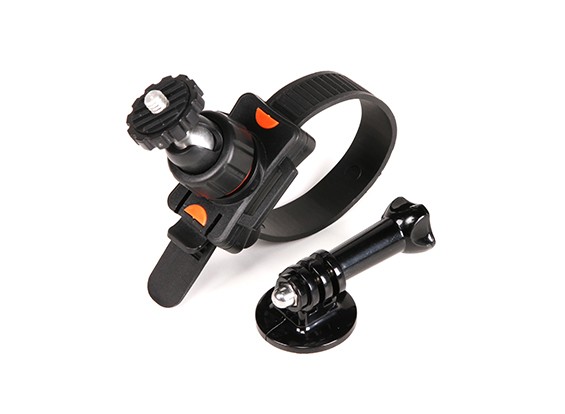
The operation of the underwater action camera is not much different from the usual. Important dry it after each use, ensure that the lens stays clean and does not leak. If there is an aquabox, then after use it is necessary to remove the camera from the box and dry them separately.
Store appliances best in a dark dry place with an average humidity level. Excessively dry air can lead to the formation of microcracks on the surface of a housing specially designed for operation in a humid environment. Over time, this is reflected in the overall tightness of the device.
A very important point: you can not keep the gadget in a completely discharged state, it will lead to rapid degradation of the battery. Given the already small size of the battery, the recording time can be greatly reduced. Leaving the device for long-term storage, you should fully charge the gadget at a slow charge, and then simply turn it off - this will allow to maintain the density of the battery.
Very important on time clean the lens, especially in summer. Algae grains caught on the lens may “bloom”, causing greenish or oily spots on the glass surface.To clean the surface of the lens, there are special kits for its proper processing.
Conclusion
The action camera for shooting under water is a highly specialized device. As a rule, such devices are acquired by people who already know where and how they will operate them. If there is very little experience, it is best to follow the recommendations given above and rely on the main selection criteria for this type of video camera. The action camera makes life more diverse, helping to capture the bright moments of victories and annoying blunders in order to rethink them and extract the necessary experience.

/rating_off.png)











